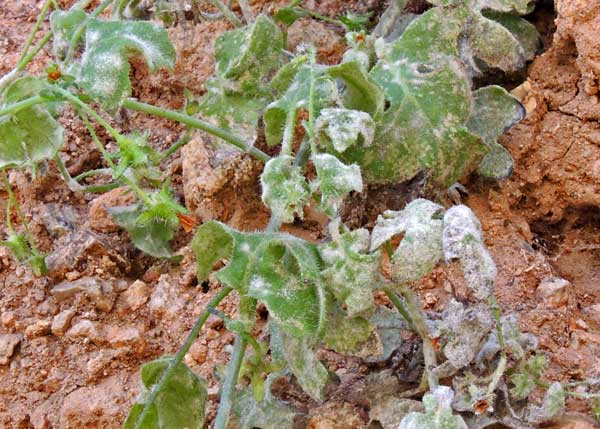Powdery Mildew

This infected plant is Blue Fiesta Flower, Pholistoma auritum, a member of Hydrophyllaceae/Boraginaceae. March 30, 2014 at White Canyon Wilderness, Pinal Co., Arizona.
From Wikipedia: Powdery mildew is a fungal disease that affects a wide range of plants. Powdery mildew diseases are caused by many different species of fungi in the order Erysiphales. It is one of the easier diseases to spot, as its symptoms are quite distinctive. Infected plants display white powdery spots on the leaves and stems. The lower leaves are the most affected, but the mildew can appear on any above-ground part of the plant. As the disease progresses, the spots get larger and denser as large numbers of asexual spores are formed, and the mildew may spread up and down the length of the plant. Powdery mildew grows well in environments with high humidity and moderate temperatures.